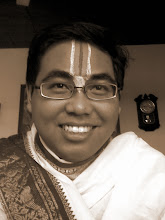 For the community of the village they have common temples. Every Balinese village has three main public temples. The Pura Dalem or Death Temple, located at village’s outskirts, near cemetery and crematorium ground. The seat of Bhataras who preside over negative energies and take charge on departed souls. This is also the abode of Lord Siva and Durgadevi, worshipped in their many wrathful forms such as Lord Kalabhairava and Mahabhairavi or Kali Ma. The second one brings the name Pura Desa or literally means The Village Temple. The Pura Desa supposed to worship Lord Brahma and representing other Deva realms as organizer of the whole cosmic manifestations, thus also organization of the village community in mundane realm. It placed at the centre of the village, with two characteristics. One is the Bale Agung, The Great Stage of Assembly, the place for all Devas to meet together and accept offerings from the villagers. Designed as a high and very wide platform, resembling the Devasabha of celestial realm. Other building in inner part of the temple is a sannidhi called Gedong Anda or The Sanctum of Egg. This is representing the Brahmanda, the whole egg-like universe, the Hiranyagarbha, the Shining Golden Womb, the Satyaloka, abode of Lord Brahma, the highest living entities and the highest sovereign ruler of all material planetary system. Then the third temple is Pura Puseh, The Navel Temple. Placed at the highest point of the village, housing the pagoda-like structured sannidhi of Lord Vishnu. The Navel Temple considered as the origin of both material and spiritual energies of the village. This is the place for deified ancestors of the village, who considered as perfect souls that has entering the Paramapadam (amor ing acintya as in archaic Javanese term) to serve The Supreme Lord. They also preside over the sattvic or positive energies permeating the whole village. The three temples keep the mystical forces of the village stay in balance and perfect harmony. Accordingly, we have presented in previous posting, that the worship of Trinatha has long became the core of Indonesian Hindu spirituality especially as we seen in Balinese today, similar with the cult of Lord Jagannath at Puri.
For the community of the village they have common temples. Every Balinese village has three main public temples. The Pura Dalem or Death Temple, located at village’s outskirts, near cemetery and crematorium ground. The seat of Bhataras who preside over negative energies and take charge on departed souls. This is also the abode of Lord Siva and Durgadevi, worshipped in their many wrathful forms such as Lord Kalabhairava and Mahabhairavi or Kali Ma. The second one brings the name Pura Desa or literally means The Village Temple. The Pura Desa supposed to worship Lord Brahma and representing other Deva realms as organizer of the whole cosmic manifestations, thus also organization of the village community in mundane realm. It placed at the centre of the village, with two characteristics. One is the Bale Agung, The Great Stage of Assembly, the place for all Devas to meet together and accept offerings from the villagers. Designed as a high and very wide platform, resembling the Devasabha of celestial realm. Other building in inner part of the temple is a sannidhi called Gedong Anda or The Sanctum of Egg. This is representing the Brahmanda, the whole egg-like universe, the Hiranyagarbha, the Shining Golden Womb, the Satyaloka, abode of Lord Brahma, the highest living entities and the highest sovereign ruler of all material planetary system. Then the third temple is Pura Puseh, The Navel Temple. Placed at the highest point of the village, housing the pagoda-like structured sannidhi of Lord Vishnu. The Navel Temple considered as the origin of both material and spiritual energies of the village. This is the place for deified ancestors of the village, who considered as perfect souls that has entering the Paramapadam (amor ing acintya as in archaic Javanese term) to serve The Supreme Lord. They also preside over the sattvic or positive energies permeating the whole village. The three temples keep the mystical forces of the village stay in balance and perfect harmony. Accordingly, we have presented in previous posting, that the worship of Trinatha has long became the core of Indonesian Hindu spirituality especially as we seen in Balinese today, similar with the cult of Lord Jagannath at Puri.
JAGJIT SINGH BHAJANS FREE DOWNLOAD
1 hour ago













No comments:
Post a Comment